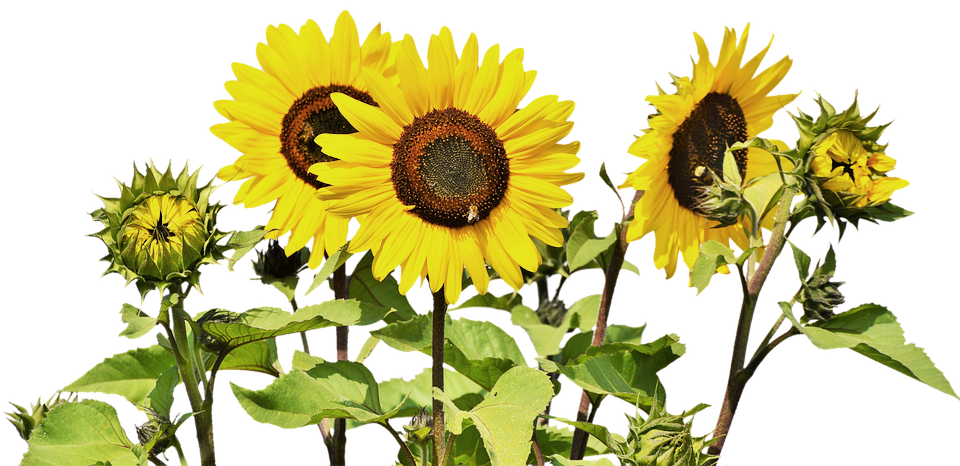
5 Smart Steps for Preparing Your Yard For Winter
By Chris Edmunds
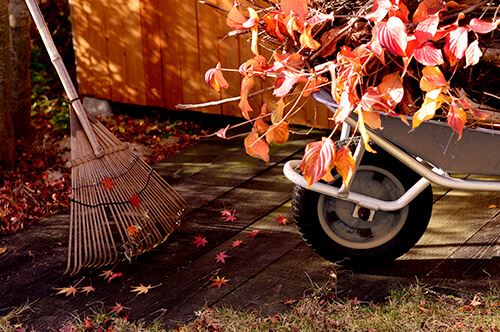
We're right in the middle of fall, and the autumn colors are at their peak. It might seem like its a bit early to start thinking about winter yard prep, but in fact, it's the perfect time to start. There are a few essential fall tasks to complete before winter sets in, and if you do cross one of them off every weekend, you'll have accomplished the whole list by Thanksgiving!
Clear Out Garden Beds
If you've got annuals that are looking a little worse for wear, and maybe a few spent veggies, now is a great time to clear them out. Check for diseased bits, and cut those out. If your annuals and vegetables were otherwise healthy, save the healthy clippings for the compost heap. They'll take a long time to decay at full size, so take them all down on the ground, including big stuff like corn stalks, and run them over with the lawnmower a few times. The blade will chop them up into smaller bits, which will decompose evenly. If you don't have a compost heap, spread this mixture across your garden and flower beds. You can work this green matter into the soil right now, or you can leave it on the surface over the winter and work it under in the spring.
Most perennials can be left over winter to welcome wildlife, reseed, and help insulate any new growth that remains through winter. Keeping them in place also adds a bit of interest to your winter landscape, and can help you plan where to place annuals next spring. Ornamental grasses should be cut back in late winter/early spring.
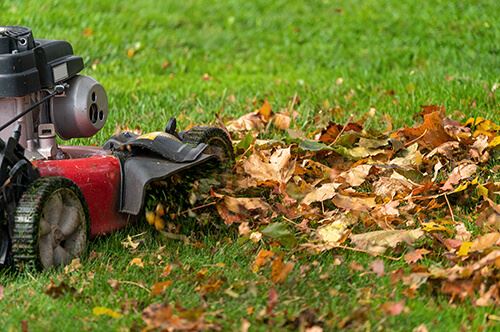 Give the Lawn Some TLC
Give the Lawn Some TLC
Give your lawn one last mowing. If there are leaves all over the yard, resist the urge to rake them up before mowing. Leaves are an excellent soil improvement, so mow right over them to break them up. If you've got a bagger for your mower, pick everything up, leaves and all. If you haven't got a bagger, rake up the clippings and leaves after. Add all of this to your composter, or, if you haven't got a composter (we can fix that!) spread it over the soil in your garden beds. Just like the garden waste, you can work it in now, or leave it until spring.
Once you've picked up all the clippings, it is a good idea to do core aeration for your lawn before winter. Aerating in the fall is actually more important than in the spring because it creates channels for the melting snow to penetrate down to the roots and helps to build healthier grass. After aerating, you can mow over the plugs and leave them, or you can rake them up and add them to the compost as well.
After aerating, spread new grass seed on any spots that are looking sparse and spread a slow-release granular fertilizer all over your lawn.
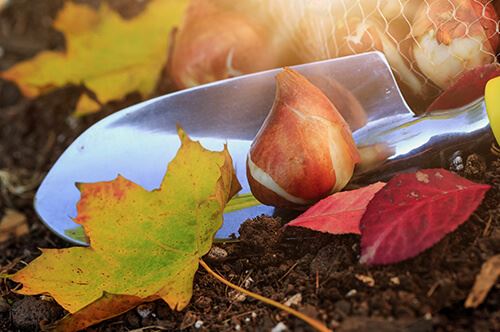 Plant Your Bulbs
Plant Your Bulbs
Now is the time to plant tulips, snowdrops, daffodils, alliums, crocuses, or hyacinths for next springs blossoms. Bulbs that flower in the summer should be planted in the spring. Bulbs need to be planted deep, generally 3-4 times deeper than the width of the bulb. For tulips, this usually means a depth of 6-8 inches. Check the package for each type of bulb you have to make sure you're preparing them correctly. Remember to plant them pointy side up, and give them a good drink when you're done. It also wouldn't hurt to add a little sprinkle of bulb food to the bottom of each hole.
Give Everything a Good Drink
As you’ve probably noticed cooler days and nights mean plants need less watering, however they still need water throughout the winter for root development.
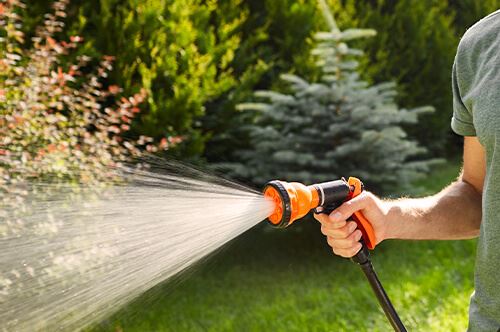
Every perennial, shrub, and tree in your yard could use a few good soaks before the ground freezes, especially if the weather has been dry. You can water passively while you're working on other chores by setting the hose to a slow trickle. Place it by its first plant, and set a timer for 20 minutes. For smaller plants, 20 minutes is probably enough. For larger perennials and shrubs, you'll want to move the hose to 3-4 different spots around the plant to make sure it gets a good soak down to the roots on all sides.
Protect Tender Plants from Dry Cold Winds
Strawberries, hydrangeas, and roses can benefit from a little protection after they have been hit by the first frost. Strawberries, as their name suggests, should be covered with straw to insulate them through the winter. For roses and hydrangeas, you'll want to make a cage of stakes around them and wrap them up well with burlap to protect them from the drying prairie wind. You can also spray all perennials, trees, and shrubs with an anti-desiccant product to protect them from the wind. This is great for evergreen hedges and shrubs, even if they're not new. The product forms a coating that can help prevent winter burn from the harsh cold weather.
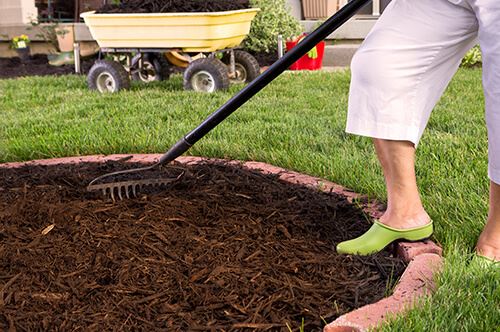 Make it Cozy with Mulch
Make it Cozy with Mulch
A layer of mulch will help protect roots during the winter. Before the ground freezes solid, tuck all those trees, shrubs, and perennials in for a cozy winter sleep. A layer of wood chip mulch 2-4 inches thick over the root zone will help insulate them from the damaging freeze/thaw cycles. Just make sure you don't pile the mulch up around the base of your trees. This is called "volcano mulching", and it can cause the trunks to rot, making trees and shrubs weaker, and more susceptible to damage and disease.
Perennials, especially the more delicate ones, will appreciate a cozy blanket of straw mulch. Better yet, you can wait to remove fallen leaves from your perennial beds until hard frosts are finished, as it helps to insulate them. Don't cut their foliage back, as the spent leaves help to trap warm air around them. If needed lightly pile straw or leaf mulch around them to keep them cozy and safe through the winter. Wood chips or bark mulch may be too heavy to pile on top of some fragile perennials, but straw will be just right.
Enjoy the Season!
We've got about five weekends left until winter really sets in. Getting just one task done per weekend will help set your yard up for a strong start next spring, and you'll have it all done right when the mercury falls! Proper prep will also eliminate a lot of the annoying cleanup that typically awaits you in the spring.

